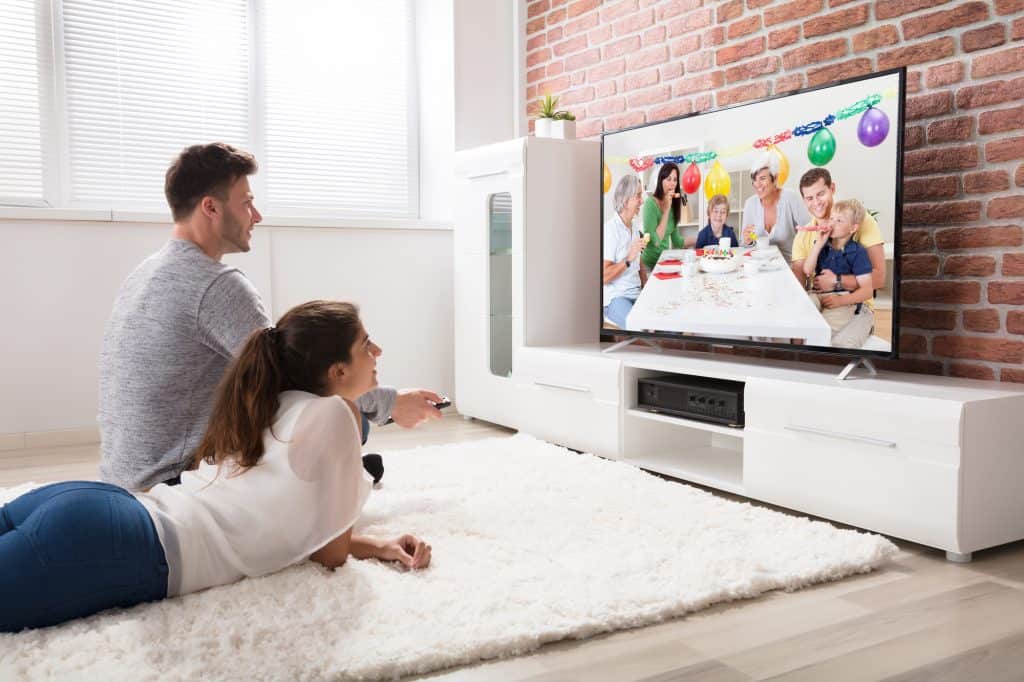Isn’t it annoying when the quality of the film you are watching on your expensive TV is not worth all the money you invested in it? It is not the fault of the film’s lighting or equipment. Instead, it is something you need to figure out with your TV. The newer model you have, the higher the risk that you will experience this issue.
This is called the soap opera effect, or video interpolation, and it can make your TV’s picture quality strange, but it is not something you have to live with forever.
Understanding The Soap Opera Effect

The soap opera effect may sound like it is a defect or bug on your TV set, but the reality is, it is a feature built-in on purpose in tons of modern TVs. It is called quite a few different names, but the technology behind this phenomenon is called video interpolation or motion smoothing. It was added to newer LED and LCD TVs to address a problem.
Older TVs (plasma and old CRT models) have no issues with motion blurring like LCD models. Some models tend to be more sensitive than others, but when the screen has to display a show or movie with fast motion (like video games or sports telecasts), the blur gets worse.
The end result is obscured image detail. To solve this, manufacturers opted to use displays that have higher refresh rates. They move from the common 60Hz refresh rate of old TVs to 120 Hz of LCD models.
Unfortunately, most sources of video (movies and shows for streaming and broadcast) are not delivered with this frame rate. Thus, motion smoothing, through inserting images in between the existing frames per second, was done to fake this higher frame rate. This is done by your TV set, which analyzes the picture and guesses what kind of images can be inserted. Motion smoothing has also been used in some OLED TVs.
When it comes to video games and sports programs, motion smoothing works just fine because they are produced and recorded in a different way. For TV shows and movies, they are mostly shot at only 24 frames per second. So when people watch The Hobbit at 48 frames per second instead of the 24, they became unnerved. They felt that it was unnatural and for some people, looked too real.
Are There Benefits Of Motion Smoothing?

The answer depends on what you are watching. When it comes to sportscasts and video games, it does bring an advantage. It makes the action appear smoother. It might not be the same when it comes to other shows, though.
Still, while some people are more sensitive to motion smoothing, others might not even mind it. It depends on how the movie or TV show is shot. If you have so far been unbothered by the quality of what you are watching, then you can just continue to watch without making any changes. After all, it will not do your eyes any damage at all.
If you realize that motion smoothing is the reason why your viewing is off (especially if you own a new TV), then you might want to learn how to remove or disable it.
Switching Off Motion Smoothing
Many television sets being sold nowadays have this feature on as part of the standard settings. Fortunately, it is not that complicated to disable it. The most complicated part is actually finding out what the setting is called and how to disable it permanently.
Every manufacturer has its own name for motion smoothing like LG refers to it as TruMotion while Samsung calls it Auto Motion Plus. Sony, on the other hand, refers to it as MotionFlow. Most of them (except for very cases) have “motion“ in the name somewhere.
The difference in naming is the huge reason why people get confused about the Soap Opera Effect. This also makes it tough to disable. Manufacturers have thus been recommended to add a button on the remote control (called Filmmaker Mode) to easily disable it.
You will also need to disable it if you are using built-in apps in your smart TV (like Netflix or Hulu) because the general TV setting might not apply to your streaming content. You will need to switch it off on the app setting as well.
If your model has a “Global“ option to make the setting the same all the time, you can use it to say goodbye to the Soap Opera Effect forever.
What Happens After Disabling Motion Smoothing?

If you have been watching with this setting for a while now, you might get a bit confused at first because it will look a bit blurrier than before. Unfortunately, this is the trade-off and you will just need to get used to it.
If you, however, invested in a high-end TV set, you might find other blur-reducing technologies other than motion smoothing or have an adjustable version of it so you will not find it jarring.
Yes Or No To Motion Smoothing?
Many people might not realize that they have been watching with the Soap Opera Effect for some time now. If so, they might actually be more used to it and find disabling it worse than just keeping it on. The fact is, it is all down to your personal preference. If you are a sports fan and love watching live games at home, then you will definitely want to keep it on.
However, if you are a movie fan and love watching daily, you might want to compare your viewing experience with and without the Soap Opera Effect before deciding. The great thing is, once you figure out how to find the setting and disabling it, you can easily switch it on any time you want.
You can even end up deciding every single time you put something on. Again, it all boils down to how you like to watch your films and shows and being aware of this feature just gives you more ways to personalize the viewing experience.


